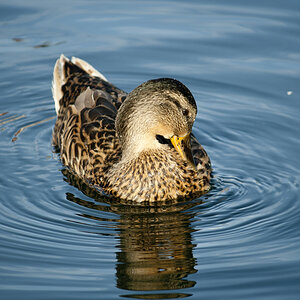Derrel
Mr. Rain Cloud
- Joined
- Jul 23, 2009
- Messages
- 48,225
- Reaction score
- 18,941
- Location
- USA
- Website
- www.pbase.com
- Can others edit my Photos
- Photos OK to edit
Well, you currently shoot Nikon, so you might as well stick with them. You'll have the superior controls and ergonomics Nikon has, with the almost-invisible continuity between the semi-pro Nikon odies and the top pro level bodies. A Nikon D300 is a D700 is a D3s or D3x; Canon uses two sets of ergonomics and controls. Nikon's semi-pro D200 and D300 have been "almost exactly: like the pro bodies, where Canon has decidedly different controls on the 1-series and the mid-level. Nikon has had a pro-capable D300 since 2007. Nikon also has two nice full-frame "pro" sports/PJ/generalist d-slr bodies in the D700 and the D3s. Canon has one pro-level full-frame body, the 1Ds Mark IV, which is slower in framing rate and very expensive. The Nikon D700 is about half the price of a Nikon D3s, or a little more than half of the price of the Canon 1Ds-III. Nikon has a perfected CLS multi-flash system: the one in the 7D is not working out so well, but then, it's Canon's first-ever camera with a built-in multi-flash commander, something Nikon's been offering for several generations of cameras now.
For PJ work, many of the high-end people have switched to Nikon D3 systems.. people like Robert Hanashiro at USA Today, as well as many SPorts Illustrated guys let Canon over the 1D-III autofocusing fiasco, and also because, well, a full-frame d-slr has a HUGE viewfinder image compared with a crop-body camera. Canon lost the lead in the spots/PJ market once the D3 came out, primarily because a full-frame sensor offers better high-ISO performance, a larger viewfinder, and more "coverage" on high-speed prime lenses like your 300/2.8.
The way I see it, Nikon has three pro-capable bodies: D300s with video and improved High-ISO, the D3s with vastly improved High-ISO (the industry leader most would say), and the D700. All three offer similar AF performance, although the D700 recently passed a rigorous,highly technical test done by Marianne Oelund, and the D700 and D3 are the AF speed champs. Canon has the 7D--new and untested so far, and the 1D series--nothing in-between with pro quality body capabilities. Nikon has the D700, which is an area Canon is not competitive in. The D700-D3 series 51-point AF is color-aware,and does better at AF focus tracking than the 1D-III Canon, which has a long,checkered A problem list. (Check Robgalbraith.com)
Back to long lenses: I like Nikon's new D3s with the Full Frame, plus the 1.2x 8 MP option, plus the 1.5x DX option, all in one body. As you know,in credentialled shooting, you are often very close to the action; a 300mm lens on 1.5x or 1.6x is often far too narrow a field of view,and all you get is chopped-off feet. Your 300/2.8 is going to be a bread and butter lens, as will be your 24-70 and 70-200 2.8 lenses. Nikon's 300/2.8 VR, 24-70,and new 70-200 VR-II are superb designs. Canon;s L-glass lenses, some are fabulous, some not really so--check around on the 50/1.2L and read four or five reviews--that lens disappoints most reviewers when the results are carefully scrutinized.
I don't know how you feel about switching from Nikon to Canon: I have seen the pendulum swing multiple times now. Nikon, Canon, Nikon, Canon, and now Nikon is in ascendency again. THe guys who shoot many AP assignments and newspaper guys using pool gear are till using Canon systems purchased in the 2005 buying cycle. Those who can afford to have, in many cases, switched to Nikon simply for the full-frame advantages, plus the 200-400 VR zoom which no other system has. Newspapers that had a 2007 or 2008 buying cycle have,in many cases, gone to the new Nikon D700-D3-D300 option of three capable professional bodies + the best flash system.
Canon let the lower-end pros "hang" for multiple years with the 30D-40D-50D when Nikon was stealing the lower-level pros away with the D200 then the D300; Canon refused to put a professionally capable AF system into its bodies from 2003 to october of 2009: Nikon realized that people who need "two" pro bodies could buy two D300 bodies or two D700 bodies, for the price of one Canon 1D-III, and that's kind of why Nikon stole so many new sales away in the 2007-2008-2009 buying cycles.
Canon L-glass. I own a few L-lenses. Not much different than Nikons ED glass f/2.8 lenses,really. The choice was VERY clear until the 1D-III came out-Canon all the way,body wise. But now, Nikon has passed Canon with the 2 full-frame "speed" bodies with pro-AF, and the D300s for the 1.5x crowd. Of course, if you feel like going to Canon because of what you see being shot next to you, realize much of that is "pool gear", bought in 2005 or 2006...it's almost 2010 now. If it were me, I'd look very seriously at the D700 as my body of choice for PJ/sports on a budget.
For PJ work, many of the high-end people have switched to Nikon D3 systems.. people like Robert Hanashiro at USA Today, as well as many SPorts Illustrated guys let Canon over the 1D-III autofocusing fiasco, and also because, well, a full-frame d-slr has a HUGE viewfinder image compared with a crop-body camera. Canon lost the lead in the spots/PJ market once the D3 came out, primarily because a full-frame sensor offers better high-ISO performance, a larger viewfinder, and more "coverage" on high-speed prime lenses like your 300/2.8.
The way I see it, Nikon has three pro-capable bodies: D300s with video and improved High-ISO, the D3s with vastly improved High-ISO (the industry leader most would say), and the D700. All three offer similar AF performance, although the D700 recently passed a rigorous,highly technical test done by Marianne Oelund, and the D700 and D3 are the AF speed champs. Canon has the 7D--new and untested so far, and the 1D series--nothing in-between with pro quality body capabilities. Nikon has the D700, which is an area Canon is not competitive in. The D700-D3 series 51-point AF is color-aware,and does better at AF focus tracking than the 1D-III Canon, which has a long,checkered A problem list. (Check Robgalbraith.com)
Back to long lenses: I like Nikon's new D3s with the Full Frame, plus the 1.2x 8 MP option, plus the 1.5x DX option, all in one body. As you know,in credentialled shooting, you are often very close to the action; a 300mm lens on 1.5x or 1.6x is often far too narrow a field of view,and all you get is chopped-off feet. Your 300/2.8 is going to be a bread and butter lens, as will be your 24-70 and 70-200 2.8 lenses. Nikon's 300/2.8 VR, 24-70,and new 70-200 VR-II are superb designs. Canon;s L-glass lenses, some are fabulous, some not really so--check around on the 50/1.2L and read four or five reviews--that lens disappoints most reviewers when the results are carefully scrutinized.
I don't know how you feel about switching from Nikon to Canon: I have seen the pendulum swing multiple times now. Nikon, Canon, Nikon, Canon, and now Nikon is in ascendency again. THe guys who shoot many AP assignments and newspaper guys using pool gear are till using Canon systems purchased in the 2005 buying cycle. Those who can afford to have, in many cases, switched to Nikon simply for the full-frame advantages, plus the 200-400 VR zoom which no other system has. Newspapers that had a 2007 or 2008 buying cycle have,in many cases, gone to the new Nikon D700-D3-D300 option of three capable professional bodies + the best flash system.
Canon let the lower-end pros "hang" for multiple years with the 30D-40D-50D when Nikon was stealing the lower-level pros away with the D200 then the D300; Canon refused to put a professionally capable AF system into its bodies from 2003 to october of 2009: Nikon realized that people who need "two" pro bodies could buy two D300 bodies or two D700 bodies, for the price of one Canon 1D-III, and that's kind of why Nikon stole so many new sales away in the 2007-2008-2009 buying cycles.
Canon L-glass. I own a few L-lenses. Not much different than Nikons ED glass f/2.8 lenses,really. The choice was VERY clear until the 1D-III came out-Canon all the way,body wise. But now, Nikon has passed Canon with the 2 full-frame "speed" bodies with pro-AF, and the D300s for the 1.5x crowd. Of course, if you feel like going to Canon because of what you see being shot next to you, realize much of that is "pool gear", bought in 2005 or 2006...it's almost 2010 now. If it were me, I'd look very seriously at the D700 as my body of choice for PJ/sports on a budget.
Last edited:



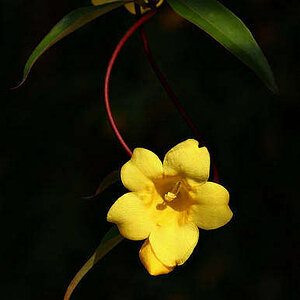
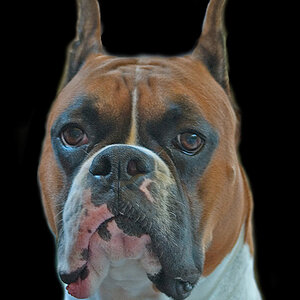

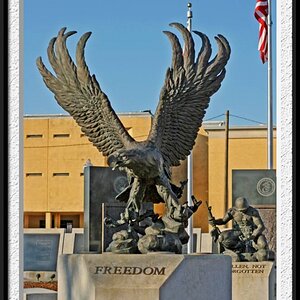
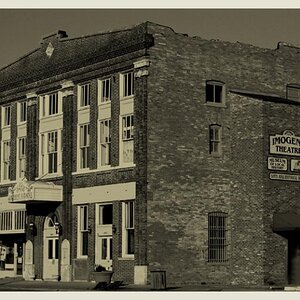

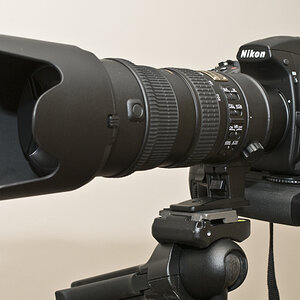
![[No title]](/data/xfmg/thumbnail/42/42281-7e2c2677bdc791ca1918fb67b6b760c5.jpg?1619740089)
![[No title]](/data/xfmg/thumbnail/39/39429-cfa441056f1e6a1995539dc87c794876.jpg?1619739028)

